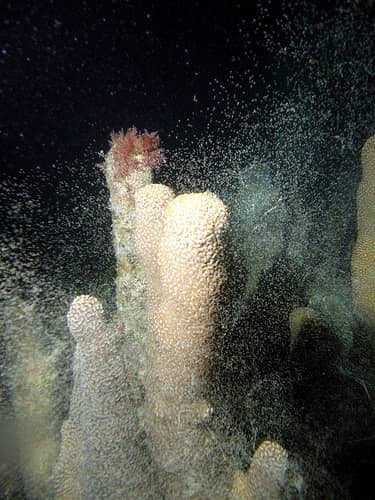FWC Researchers Witness Spawning of Rare Coral in Florida

On a Saturday night dive near Key Largo, Florida Fish and Wildlife Conservation Commission (FWC) researchers saw something previously unseen in the state: male and female pillar coral spawning together.
The divers, in Florida Keys National Marine Sanctuary waters, witnessed male pillar coral colonies release sperm, followed a few minutes later by female colonies releasing eggs. The Aug. 4 event marked the first officially documented occurrence of this behavior in Florida.
Previously, it had been unclear whether a female pillar coral population existed in the state, as no one had documented the release of pillar coral eggs. Researchers were on hand to try to observe this activity during the two- to five-day period after the August full moon, a time when corals are known to spawn.
“We are excited to confirm the presence of male and female pillar coral colonies in Florida,” said Kate Lunz, an FWC research scientist who participated in the dive. “This indicates a population with the potential to reproduce.”
Unlike many other stony coral species, which produce both sperm and eggs, pillar coral form separate male and female colonies for reproduction. The colonies are made up of multiple pillars, or columns, clustered together and rising from the ocean floor.
Pillar coral is a state-listed threatened species and is rare in the Florida reef tract. Its range in the state is believed to stretch from Palm Beach County to the Dry Tortugas. It was a popular target of the curio trade before its collection was banned. The coral continues to face threats from disease, sedimentation and other factors.
For more information on corals in Florida, visit MyFWC.com/Research, click on “Habitat,” and select “Coral Reefs.”

